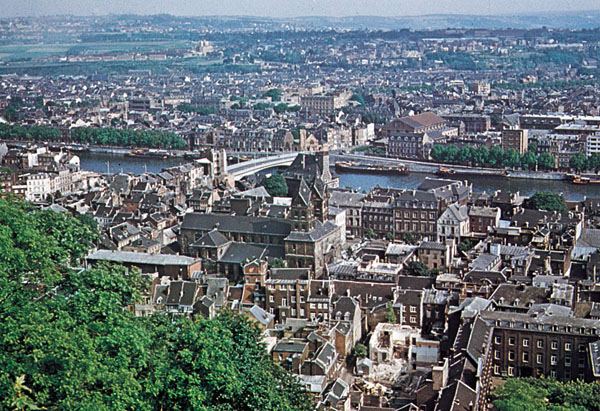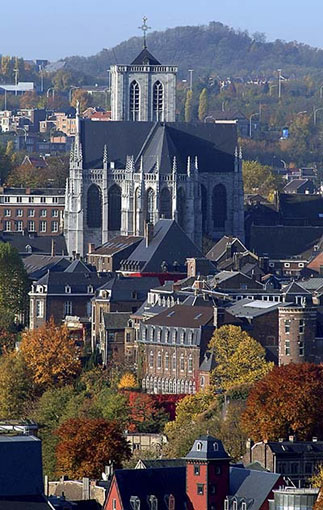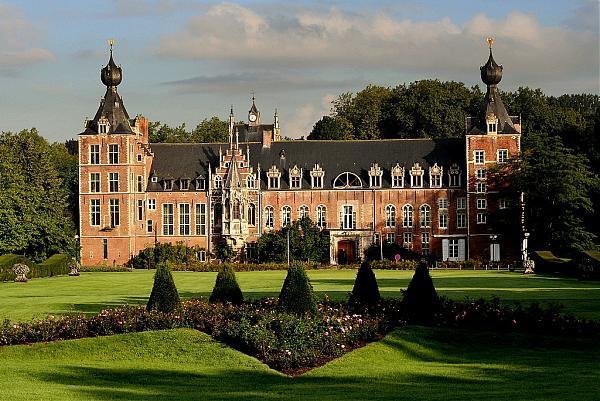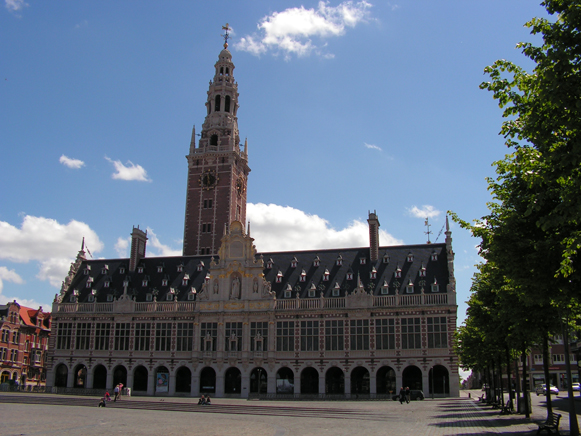Belgium
Belgium (French: Belgique; Flemish: België). A West European country populated by two principal nationalities, the Dutch-speaking Flemings and the French-speaking Walloons, as well as by about 700,000 immigrants, including 3,000 Ukrainians. Since 1830 Belgium has been a constitutional monarchy. Its 30,689 sq km had a population of 11,492,641 in 2020. The capital is Brussels.
The first contact between Belgium and Ukraine was made by the Fleming Willem van Ruysbroeck, who in 1253–5 traveled through Kyivan Rus’ and left an account of his travels. The Principality of Galicia-Volhynia had commercial relations with Flanders through Prussia and the Baltic Sea (a letter of 1324 from the townsmen of Volodymyr-Volynskyi mentions the importation of woolen cloth from Ypres [Ieper], Tournai [Doornik], and Poperinge into Ukraine). The documents of Prussian merchants in Lviv at the end of the 14th century and the beginning of the 15th century show that Lviv received not only woolen cloth, but also amber, in exchange for furs, silk, and eastern spices. The wars between Poland and the Teutonic Knights (1409–66) interrupted this trade for a long time. Later on, trade was resumed, and in the 16th–17th century, when Flanders flourished economically and culturally, Flemish and Walloon merchants, tradesmen, and monks visited Ukraine. Flemish engravers left many portraits of prominent Ukrainians, cartographers marked the territories of Ukraine on their maps, and the Flemish press took a keen interest in news from Ukraine.
After the creation of the Belgian kingdom (1830) Belgian industry expanded, and Belgian capital reached Ukraine. At the end of the 19th century Belgian firms participated in mining ozocerite and oil in Boryslav, Galicia. The Russo-Belgian Company was one of the largest industrial organizations in Russian-ruled Ukraine. The Belgian company Cockerill was the main partner in the South-Russian Dnipro Metallurgical Company, which was established in Katerynoslav in 1887. A Belgian company owned the machine plants built in 1896 in Sumy. At the end of the 19th century Belgian capital financed the building of several foundries in the Donets Basin. From 1897 on, a Belgian firm owned the light-machine plant Progress in Berdychiv. The Belgians also had interests in the cement industry and urban development (streetcars, the telephone system in Odesa, the electrical network in Simferopol, etc). In the 1880s and 1890s Belgian investments in Ukraine reached a billion Belgian francs, but fell to 600 million during the economic crisis. The Belgians who had visited Ukraine instilled an interest in Ukraine in the Belgian intelligentsia. The geographer Jean-Jacques Elisée Reclus devoted much space to Ukraine in his Nouvelle géographie universelle (1880). The Redemptorist Fathers established a Ukrainian branch at the beginning of the 20th century.
At the same time Ukrainians became interested in Belgian literature, mainly that written in French. In 1900–10 a series of Maurice Maeterlinck’s works were translated. In 1922–45 Émile Verhaeren was published in the Ukrainian SSR, and in 1937 Charles de Coster was published.
Ukrainians in Belgium. Before the First World War only a small number of Ukrainians (workers, students) lived in Belgium. They organized the Ruthenian Neutral Circle (Cercle Neutre Ruthène) in Liège. In 1919–23 the diplomatic mission of the Ukrainian National Republic to Belgium and the Netherlands, headed by Professor Andrii Yakovliv, was stationed first at The Hague and then in Brussels.
Between the two world wars almost 300 Ukrainian political refugees (among them, Dmytro Andriievsky), workers, and students (at Leuven, Liège, and Ghent) lived in Belgium. The Society of Former Ukrainian Soldiers (1934–40, renewed in 1948) was the most active Ukrainian organization in Belgium.
During the Second World War most Ukrainians left. However, new Ukrainian émigrés began to arrive in 1945. The first to come were about 2,000 refugees (mostly women) who had done forced labor in Germany (see Ostarbeiter) and were fleeing the Soviets. In 1945 the Ukrainian Relief Committee in Belgium was formed in Brussels to defend the interests of Ukrainians and to provide material help for them. Its first chairman was M. Hrab. By 1947 the number of Ukrainians in Belgium increased to 10,000 as refugees from displaced persons camps in Germany accepted work under two-year contracts. On the completion of their contracts some of them returned to Germany, and some left for the United States and Canada. In 1948–9 there were over 200 members of the Ukrainian intelligentsia in Belgium. In 1955 there were about 5,000 Ukrainians in Belgium, and in 1977 there were about 4,000. Most of them were concentrated in the coal region of central Belgium, particularly in the provinces of Hainaut, Limburg, and Liège.
Ukrainian refugees in Belgium were remarkably active in 1946–9, when the Ukrainian Relief Committee in Belgium had 29 branches. Prewar organizations such as the Society of Former Ukrainian Soldiers and the National Union of Ukrainian Students resumed their activities. Through the help of the Apostolic See and Archbishop Ivan Buchko, the Ukrainian Student Home was established in Leuven. In 1947 the Ukrainian Learned Educational Society was formed. Other organizations—the Ukrainian Youth Association (SUM) with 21 chapters in 1949 and a summer camp in Ardennes since the 1970s, the Union of Ukrainians in Belgium (1949) with headquarters in Brussels, and the Union of Ukrainian Workers in Belgium—were established. A co-operative society, Dnipro, existed in the 1950s in Brussels; it had local branches elsewhere. To co-ordinate the activities of all organizations, the Supreme Council of Ukrainian Civic Organizations in Belgium was formed in 1948. It was chaired by Rev I. Bachynsky (until 1972), Rev H. Fukanchyk, and Petro Zeleny. Since the 1950s these organizations have gradually become less active as many Ukrainians have emigrated across the ocean.
Since 1947 the Ukrainian Catholic church has constituted a separate general vicariate of the apostolic visitature for Ukrainian Catholics (the visitator in 1974–83 was Bishop Myroslav Marusyn). Rev Maurice Van de Maele, Msgr J. Perridon, Rev H. Fukanchyk, and Rev D. Dzvonyk have served as vicars-general. After 1983 Ukrainian Catholics in Belgium were administered by the exarch in France, Msgr Michael Hrynchyshyn.
The Ukrainian Autocephalous Orthodox church was headed in 1948–50 by Archbishop Mykhail Khoroshy, then by Rev I. Bachynsky until 1972, and after that by Rev B. Khainevsky.
After 1945 the periodical Visti (Brussels) was published in Brussels by the Ukrainian Relief Committee in Belgium, and the Catholic religious review Holos Khrysta Cholovikoliubtsia was published in Leuven.
Besides those already named, the following individuals have been active in the Ukrainian community in Belgium: S. Bozhyk, Z. Vytiaz, Rev Maksym Hermaniuk, M. Demchuk, A. Kishka, Rev. I. Kit, O. Koval, M. Kohut, and Volodymyr Popovych.
Stepan Bozhyk
[This article originally appeared in the Encyclopedia of Ukraine, vol. 1 (1984).]

.jpg)



